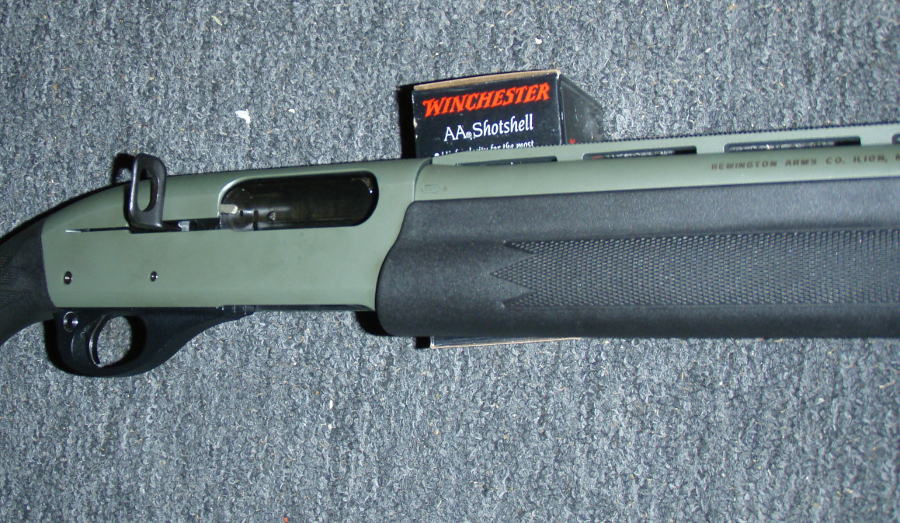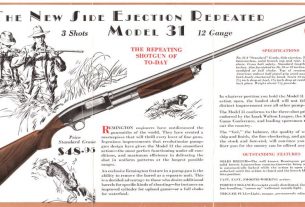While pump action shotguns are the classic action associated with American shotguns, semiautomatic shotguns have their place too. The very first semiautomatic shotgun was the John M. Browning-designed Browning Automatic 5. Known as the Sweet Sixteen when chambered in 16 gauge, the Browning Auto-5 was produced by a number of manufacturers, including Savage, Fabrique Nationale, and Remington.
Remington produced the Auto-5 as the Remington Model 11, and continued to improve its semiautomatic shotguns until the development of the Model 1100 in the early 1960s. The Model 1100 was billed as a shotgun that would revolutionize shotgunning, which indeed it did. It quickly became one of the most popular shotguns in skeet shooting and other shotgun sports. In less than a decade over one million were produced, and by the time the design was 20 years old over three million had been produced. Up to today over four million have been produced, making the Model 1100 one of the most popular shotguns of all time.
Unlike earlier semiautomatic shotguns that were recoil-operated, the Model 1100 is gas-operated. This means that gases from the gunpowder are bled off from the barrel to operate the action. The result is a shotgun that is much softer-shooting than its pump action counterparts. By all accounts the gas-operated action of the Model 1100 offers nearly a 50 percent reduction in felt recoil, part of what accounted for its popularity in shooting sports as it didn’t beat up shooters’ shoulders as much as other shotguns.
Over the course of its 50-plus year production, the Model 1100 has been available in 12, 16, 20, and 28 gauge as well as .410 bore. All but the 16 gauge are still available today. The Model 1100 remains in production, but has been supplanted in recent years by the Remington Model 11-87, based on the Model 1100 but offering greater versatility in firing different types and sizes of shells.
Advantages of the Remington Model 1100
1. Lighter Recoil
Being gas-operated means lighter recoil. That’s great for shooters who put tens or hundreds of thousands of rounds through their shotguns each year. That’s also good for younger shooters and women who might otherwise develop a flinch when shooting harder-kicking shotguns.
2. Availability of Parts and Accessories
With over four million Model 1100s having been produced, you should be able to find parts and accessories just about everywhere.
3. C&R Status
Because the first Model 1100s were produced in the early 1960s, they are now eligible for Curio & Relic status, meaning that anyone with a Type 03 FFL can purchase them and have them delivered to their house.
Disadvantages of the Remington Model 1100
1. Price
With an MSRP of nearly $1,700 the Model 1100 is just way out of the price range of most shooters. For that price you could buy five or six Mossberg 500s, or a Mossberg 500 and a few thousand shells. Even the 11-87 has an MSRP of over $800. Used Model 1100s can occasionally be found in the $500-600 range, but when purchasing a used shotgun, especially a semiautomatic one, you have no idea how many shells have been put through it and how worn out it is.
2. Potential for Jamming
While the Remington Model 1100 was tested extensively before introduction to make sure that it remained a reliable shotgun, the fact that it is gas-operated still means that it has the potential to jam. That’s especially true if the gun isn’t cleaned often enough or if it’s fired with dirty shells. And some loads may also be too weak to cycle the action, meaning that if you buy a Model 1100 you’ll want to put plenty of shells through it to make sure that it works well.
Image: Arthurrh
This article was originally posted on Red Tea News.





